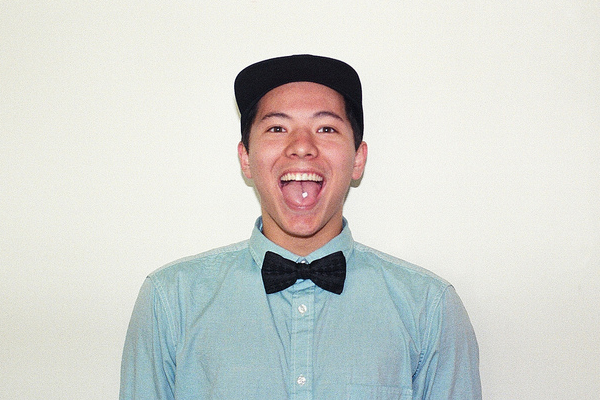 Photo by Devin Blaskovich
Photo by Devin Blaskovich
Recently, ‘selfies’ have been the subject of media hype, including an episode of Australian Story aired on September 23rd, which detailed teenage schoolgirl Olympia Nelson’s opinion piece Dark undercurrents of teenage girl’s selfies published in The Age in July. Nelson’s article argues that social media causes narcissism and transforms relations into a sexual rat race.
As someone with an overly-analytical mind and simultaneously completely removed from the ‘selfie’ fad, I wish to offer a third-party perspective on the reasoning behind the ‘selfie’: what people are trying to achieve, rather than what it perpetuates.
In the August 2013 quarterly update of Oxford Dictionaries Online, ‘selfie’ wrestled its way into the dictionary, defined as “a photograph that one has taken of oneself, typically one taken with a smartphone or webcam and uploaded to a social media website.” (here)
However, recently ‘selfies’ have taken a morbid turn—Duck-faces and the hyper-sexualisation of the feminine form have become prominent in ‘selfies’, perpetuated by twerk-tastic celebrities, peers, and potential mates. As put by Nelson: “We’re faking it, so that we get to be among the most popular, get to be ”liked” by the most popular and thereby gain popularity.”
So why do people pull faces, get half-naked, and take photos of themselves with the express intent of publishing them on the world-wide web?
In my opinion, French psychoanalyst and psychiatrist Jacques Lacan can offer insight into the ‘selfie’ through his concept of ‘The Mirror Stage’.
First published in 1966, Lacan’s collection Écrits contains the seminar The mirror stage as formative of the function of the I. This seminar reworks Freud’s psychoanalytic Oedipus complex by proposing the concept of the “Mirror Stage”.
In the Oedipus complex, Freud posits that a child must resolve their sexual desire for the parent of the opposite sex in order to internalise the rules and prohibitions of society and thus form “sexualised” subjects, i.e. the active “masculine” and receptive “feminine”. Lacan reworks this into the “Mirror Stage”, a process wherein the infant moves from the internal world of the Imaginary (the unconscious) to the socially constructed Symbolic (conscious). The process begins when a child recognises its own image in a mirror—known as the ‘specular image’, which results in the formation of the Ego. This moment allows the child to recognize the distinction between the self and the ‘other’ as the child is able to see themself the way other see them.
Occurring from the age of about 15-18 months (a tumultuous time in which we are trying to make sense of the world), this “Mirror Stage” results in the first recognition of a ‘lack’. In other words, our identity is instantly fractured because the external image that we must learn to identify with is so different from the chaos occurring inside our brains. We transcend from the “I” that speaks to the “I” that is spoken about. This duality of what we think we are and the ‘idealised image’ that other people see when they look at us leads to a feeling of alienation because we feel the need to live up to this ‘idealised image’.
So, what does this have to do with the ‘selfie’?
Think about social media as a social mirror that gives us greater control over our reality, greater control over how other people perceive us, and more poignantly, greater control how we perceive ourselves (fuck you, authenticity!). Our big, fat, juicy egos and crippling insecurities allow us to control how other people see us and what is reflected back to us. Modern trends show that if you purse your lips like a duck while wearing as little as possible, the online world will shower you with ‘likes’ and supportive comments.
We are constantly seeking ways to escape the fluidity of identity that comes with living in the 21st century. We fill our lives with social media, smart phones, tablets, laptops—all to drown out that voice in your head that says “hey wait, who am I really? How am I contributing to society? What am I going to leave behind when I die?” Social media allows us to leave a self-fashioned footprint in the world-wide web, helping us to validate our identity. However, the ‘self’ that social media allows us to capture is only a fragment of what we are—what Lacan describes as ‘little reality’ (ce peu de réalité). This image (or profile picture) that we put forward functions as both a literal image and an idealised representation of the self which helps our consciousness come to terms with reality.
So why the semi-nude, Duck face fad? Well, society is inherently patriarchal, meaning masculinity is privileged and femininity is viewed as the ‘other’, the inferior, the repressed object of the sexualised male ‘gaze’. So next time you snap a ‘selfie’ and are about to upload it, give yourself a few minutes to sit and think- “what does this image actually say about me?”, and more importantly “am I propagating gender stereotypes?”
__________________________________
Breanna Derlagen is a burgeoning poet and third-year writing student at the University of Queensland.
_________
If you have a story that you'd like to share, please submit it here.


